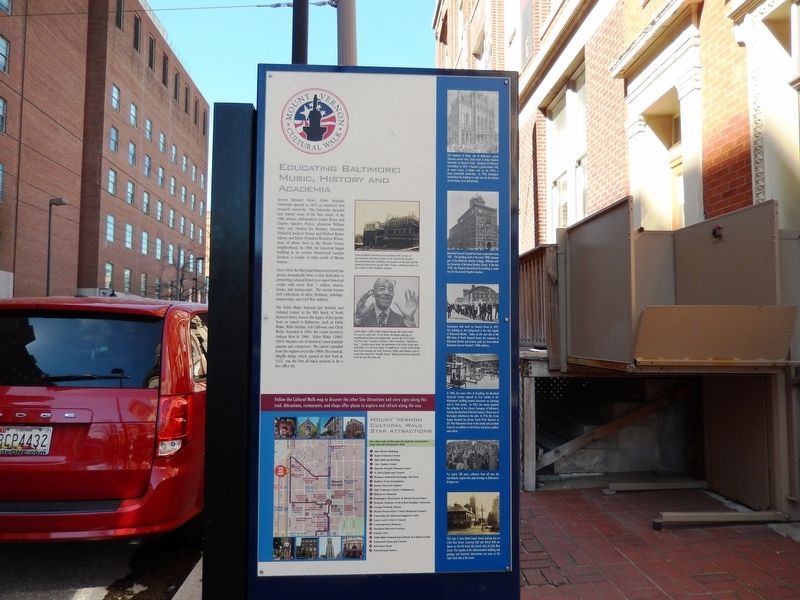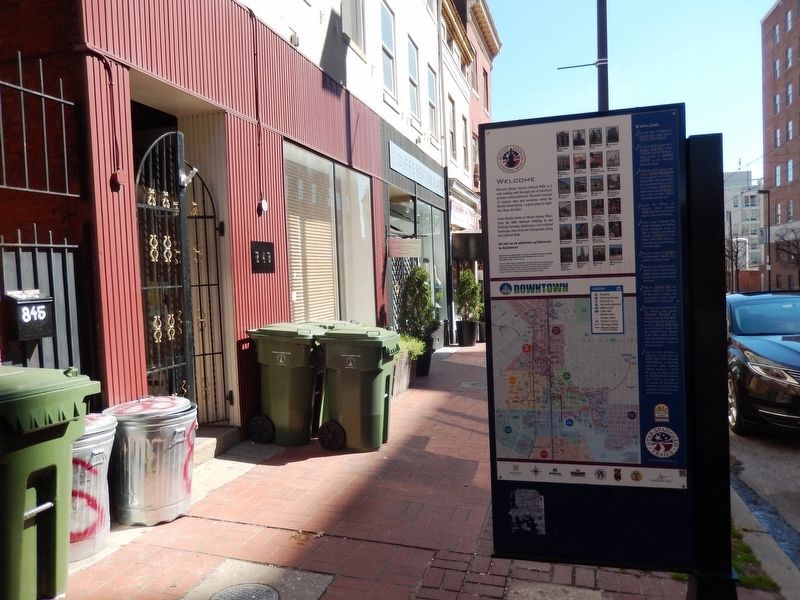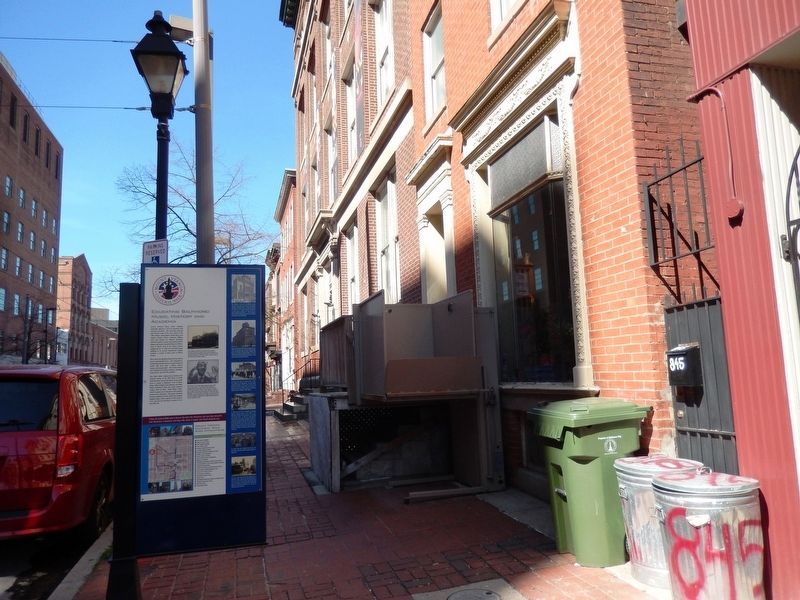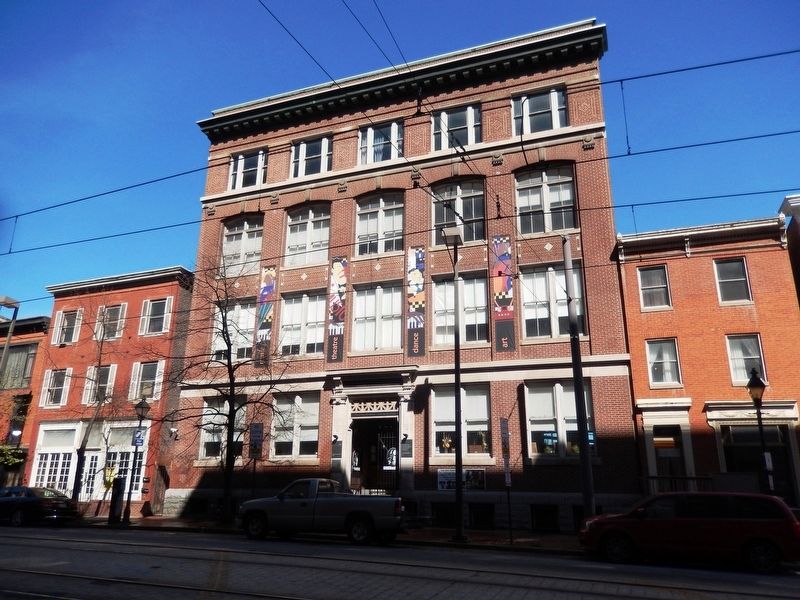Mount Vernon in Baltimore, Maryland — The American Northeast (Mid-Atlantic)
Educating Baltimore: Music, History and Academia
Mount Vernon Cultural Walk
Across Howard Street, Johns Hopkins University opened in 1876 as America’s first research university. The University attracted and trained some of the best minds of the 19th century: philosophers Josiah Royce and Charles Sanders Pierce; physician William Osler and chemist Ira Remsen; historians Frederick Jackson Turner and Herbert Baxter Adams; and future President Woodrow Wilson, most of whom lived in the Mount Vernon neighborhood. In 1908, the University began building at its current Homewood campus location, a couple of miles north of Mount Vernon.
Since 1844, the Maryland Historical Society has grown dramatically from a club dedicated to preserving colonial history to a major historical center with more than 7 million objects, book, and manuscripts. The society houses rich collections of silver, furniture, paintings, manuscripts, and Civil War artifacts.
The Eubie Blake National Jazz Institute and Cultural Center, in the 800 block of North Howard Street, honors the legacy of jazz greats born or raised in Baltimore, such as Eubie Blake, Billie Holiday, Cab Calloway, and Chick Webb. Founded in 1983, the center moved to Antique Row in 2000. Eubie Blake (1883-1983) became one of America’s most popular pianists and composers. His career extended from the ragtime era to the 1980s. His musical, Shuffle Along, which opened in New York in 1921, was the first all-black musical to be a box office hit.
[Captions:]
Johns Hopkins University was located at the corner of Howard and Little Rose streets (now Druid Hill Avenue). The administration building was located on the left and the chemical laboratory on the right. Today, nothing survives of the original Johns Hopkins campus.
(2nd image) Eubie Blake (1883-1983) began playing the organ when he was six years old. In his teens he began playing in neighborhood bars and nightclubs, and at age 16 he sold his first song “Sounds of Africa,” later renamed “Charleston Rag.” Sixteen years later, he partnered with Noble Sissle and published “It’s All Your Fault” in Baltimore. In the 1920s Blake and Sissle teamed up with Flournoy Miller and Aubrey Lyles to write the smash hit “Shuffle Along,” Blake performed regularly until he was 98 years old.
The Academy of Music, one of Baltimore’s grand Victorian concert halls, stood south of John Hopkins University on Howard Street. Designed by Hiernseo and Neilson in 1874, it housed a grand concert hall, an opera house, a theater and, by the 1910s, a large automobile dealership. In 1926, developers demolished the building to make way for the Stanley movie theater (now demolished).
Maryland General Hospital has been in operation since 1881. This building, built in
the early 1890s, became part of the Baltimore Medical College, affiliated with the University of Maryland Medical School. In the late 1950’s, the Hospital demolished the building to make way for the current Hospital structure.
Servicemen walk north on Howard Street in 1945. The building in the background is the rear façade of Richmond Market. Today, on the west side of the 800 block of North Howard Street, the remnants of Richmond Market and Armory peek out from behind Maryland General Hospital’s 1960s addition.
In 1848, four years after its founding, the Maryland Historical Society opened its first exhibit in the Athenaeum building located downtown on Saratoga and St. Paul streets. In 1854, the society acquired the collection of the Library Company of Baltimore, making the Maryland Historical Society’s library one of the largest collections in the state. In 1916, Mrs. Irvine Keyser donated the former Enoch Pratt Mansion at 201 West Monument Street to the society and provided funds for an addition to the library and picture gallery, seen above.
For nearly 100 years, collectors from all over the mid-Atlantic region have paid homage to Baltimore’s Antique row.
This view is from North Eutaw Street looking east on Little Ross Street. Levering Hall and McCoy Hall are shown on the left hand side (north side) of Little Ross Street. The façades
of the administration building and geology and chemistry laboratories are seen on the right hand side of the street.
Topics and series. This historical marker is listed in these topic lists: African Americans • Arts, Letters, Music • Education. In addition, it is included in the Former U.S. Presidents: #28 Woodrow Wilson series list. A significant historical year for this entry is 1876.
Location. 39° 17.972′ N, 76° 37.196′ W. Marker is in Baltimore, Maryland. It is in Mount Vernon. Marker is on North Howard Street. Touch for map. Marker is in this post office area: Baltimore MD 21201, United States of America. Touch for directions.
Other nearby markers. At least 8 other markers are within walking distance of this marker. Eubie Blake National Jazz Institute and Cultural Center (a few steps from this marker); Breaking Boundaries: Reverence, Renovation, and Rock and Roll (about 400 feet away, measured in a direct line); The Revels (about 700 feet away); The Professional Arts Building (about 700 feet away); Henry August Rowland House (about 800 feet away); Trinity African Methodist Episcopal Church (approx. 0.2 miles away); Emmanuel Episcopal Church (approx. 0.2 miles away); Grace and St. Peter's Church (approx. 0.2 miles away). Touch for a list and map of all markers in Baltimore.
Credits. This page was last revised on March 23, 2024. It was originally submitted on April 15, 2017, by Don Morfe of Baltimore, Maryland. This page has been viewed 221 times since then and 12 times this year. Photos: 1, 2, 3, 4. submitted on April 15, 2017, by Don Morfe of Baltimore, Maryland. • Bill Pfingsten was the editor who published this page.



